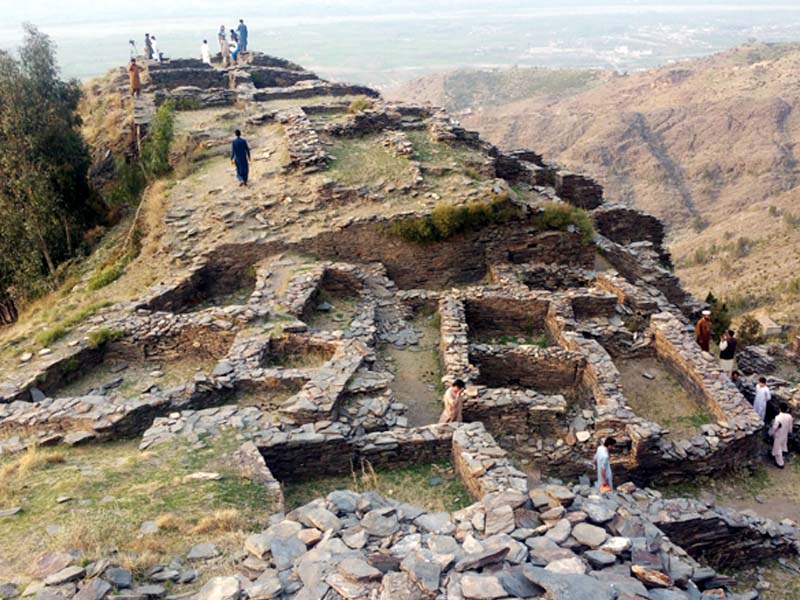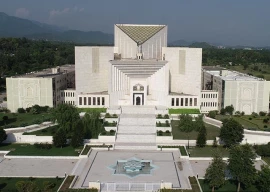
This is the same story as the last story on ancient sites in Khyber-Pakhtunkhwa – words like “indifference” and “natural weathering” will be bandied about to explain why a “glorious” structure is “crumbling”. The story is possibly as old as Raja Gira fort, which is estimated to have been constructed somewhere between 870 CE to 1000 CE. Rulers of the land neglect to value their past, allowing decay to eat away at ancient history.
The fort is said to belong to the last Buddhist ruler, Raja Gira. It is located on the peak of Odigram, 15 kilometres from Mingora city. “The structure has been marked as one of the world’s oldest places ruled by the Hindu Shahi Raj, the greater Hindus,” archaeologist Niaz Ali Shah told The Express Tribune.

Even though the fort is proof of a time and people who once ruled the region, the government of Pakistan and provincial archaeology department have not made any efforts to rehabilitate or protect it. The fort’s walls, once grand, are now pockmarked after having weathered several natural disasters over time. There is no saying if the structure would collapse as no work has been done to evaluate its condition.

However, despite its crumbling walls, the fort still attracts tourists eager to know the history crystallised in its bricks. If a rundown structure can attract tourists, then its restored state would generate revenue. Is that incentive enough for the authorities to invest in the fort? Possibly, since according to Minister for Sports and Culture Mehmood Khan, the government has started efforts to rehabilitate the fort.

The battle for the fort
It has been around 1,100 years since Sultan Mahmud Ghaznavi waged war to conquer the mountainous region. The water supply from Swat River was suspended to Raja Gira fort and later the Buddhist ruler, Raja Gira, was defeated and his fort seized. Ghaznavi also constructed a mosque in the area – it still stands; said to be the third oldest mosque in the world.

The fort, however, was discovered by an Italian mission in 1956 and taken over by the government. The 447-canal land claimed by the fort was excavated by Georgia Gullini. The entire process took from 1956 to 1962, after which Gullini explored the fort, Ali said. “The place has geographical importance, it gives a panoramic view of Swat.”
Muhammad Asad, a local, told The Express Tribune there was no route to reach the fort, yet those who wanted to see it took the pains to reach the site.
Published in The Express Tribune, March 23rd, 2016.
1736146934-0/Untitled-design-(57)1736146934-0-405x300.webp)




1736070587-0/Express-Tribune-(2)1736070587-0-270x192.webp)
1737452260-0/Gaddafi-stadium-(2)1737452260-0-270x192.webp)
1737531830-0/Saim-Ayub-injury-(2)1737531830-0-270x192.webp)


1737462113-0/justin-(3)1737462113-0-270x192.webp)






COMMENTS (2)
Comments are moderated and generally will be posted if they are on-topic and not abusive.
For more information, please see our Comments FAQ